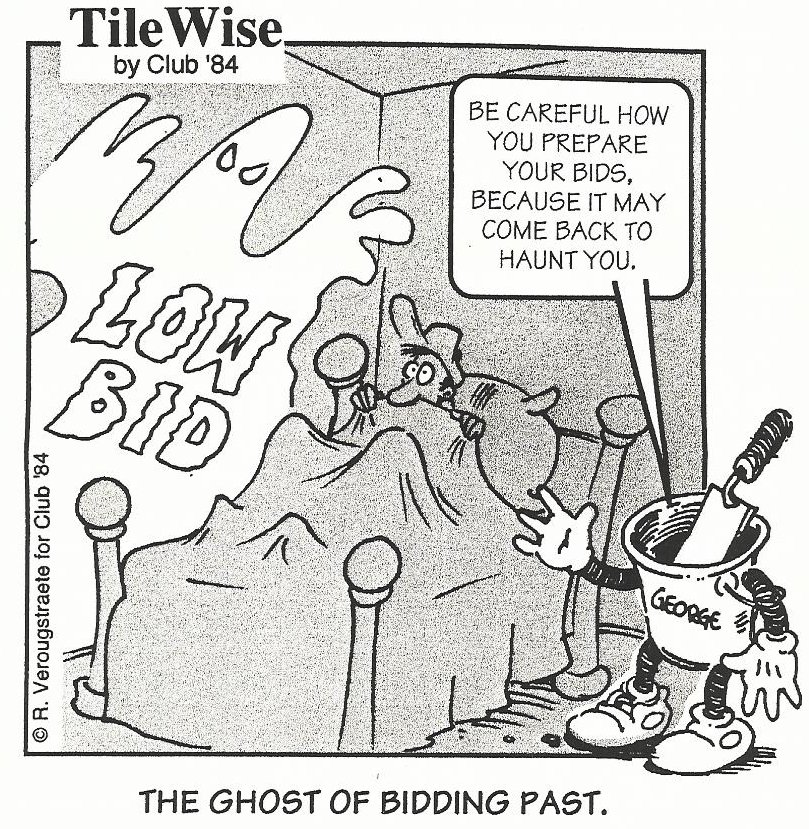Tile Tips
The Problem with Low Bids

Low bids have put a lot of contractors out of business. Consumers have also paid the price in accepting low bids since these types of jobs often result in unwanted and costly problems later on down the road.
Typically it’s the unqualified or inexperienced installers that offer unrealistic (low) bids to get a job. The items they overlook and the corners they cut in putting forth a low bid is ultimately at the owner’s expense, since it’s the owner who’ll have to deal with the resulting problems. Some examples of “cutting corners” could be that the installer uses inferior products, leaves out important installation steps, or uses unqualified labor as a means to rush through a job to save what money they can since they bid the job so low. Skimping on suitable products, methods or labor can result in a visually unacceptable installation with concealed defects leading to problems or limiting performance. This is bad advertising for our industry!
Some installers that know their way around architectural specifications look for ambiguities commonly found in these documents and base their bid on the lowest price and cheapest products. Then, after they get the job, they send in change orders (asking for more money) for the more appropriate products and methods, which were likely intended in the first place, but weren’t properly specified by the architect. So it’s important for installers to provide qualified bids and to point out any ambiguities to the general contractors or owners so they don’t become a disadvantage to the installer, and the owners don’t get stuck with added expenses.
Architects should write clear specifications (i.e. without ambiguities) and owners should qualify bids, and installers should make sure they know and use the appropriate industry standards for a given application. One way of making sure installers are qualified is to ask them to be ITS Verified through the University of Ceramic Tile and Stone (UofCTS). By taking the ITS course through UofCTS installers will learn current industry standards and methods for adhered thin-set applications. When combined with an installer’s work experience and accomplishments, the ITS training will enable them to differentiate themselves from other less professional installers. It will also earn them a competitive advantage over those who haven’t made similar commitments and investments and will allow them to justifiably charge more for their work. Bottom line: Consumers will gladly pay more for quality products and labor if they understand how to qualify the difference between a low bid and a quality bid!
